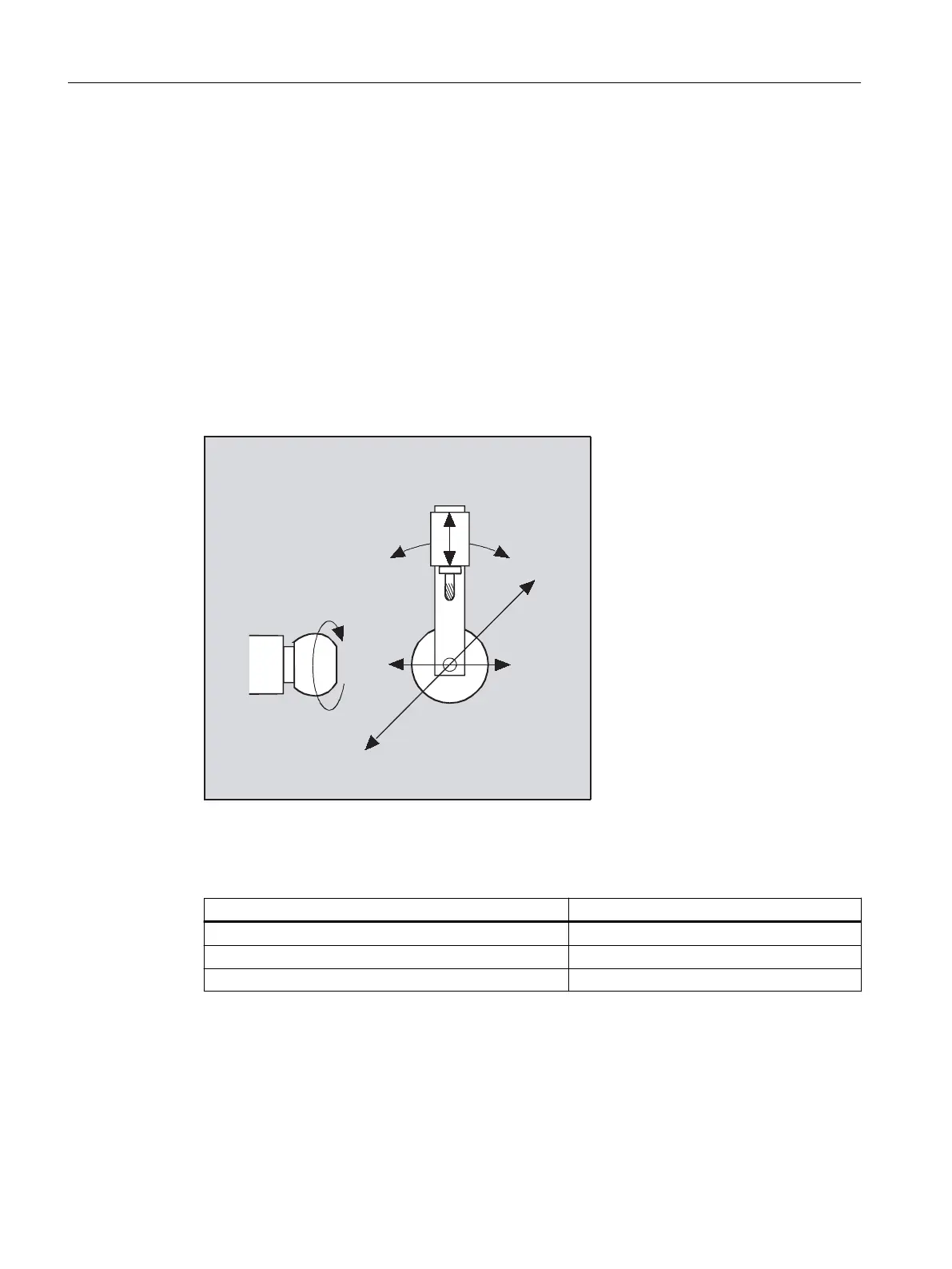The following possible relations are generally valid:
A' lies below the angle φ to the X axis
B' lies below the angle φ to the Y axis
C' lies below the angle φ to the Z axis
Angle φ can be configured in the range 0° to +89° using machine data.
With swiveling linear axis
This is an arrangement with a moving workpiece and a moving tool. The kinematics consists of
three linear axes (X, Y, Z) and two orthogonally arranged rotary axes. The first rotary axis is
moved, for example, over a compound slide of two linear axes, the tool standing parallel to the
third linear axis. The second rotary axis turns the workpiece. The third linear axis (swivel axis)
lies in the compound slide plane.
The axis sequence of the rotary axes and the orientation direction of the tool can be set up using
the machine data as appropriate for the machine kinematics.
There are the following possible relationships:
Axes: Axis sequences:
1st rotary axis A A B B C C
2nd rotary axis B C A C A B
Swiveled linear axis Z Y Z X Y X
Additional information about configurable axis sequences for the orientation direction of the
tool, see Function Manual Transformations.
3.9.2.2 Three, four and five axis transformation (TRAORI)
The user can configure two or three translatory axes and one rotary axis. The transformations
assume that the rotary axis is orthogonal on the orientation plane.
Work preparation
3.9 Transformations
NC programming
664 Programming Manual, 12/2019, 6FC5398-2EP40-0BA0

